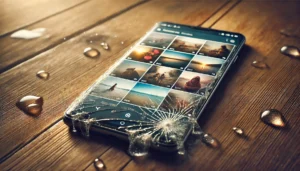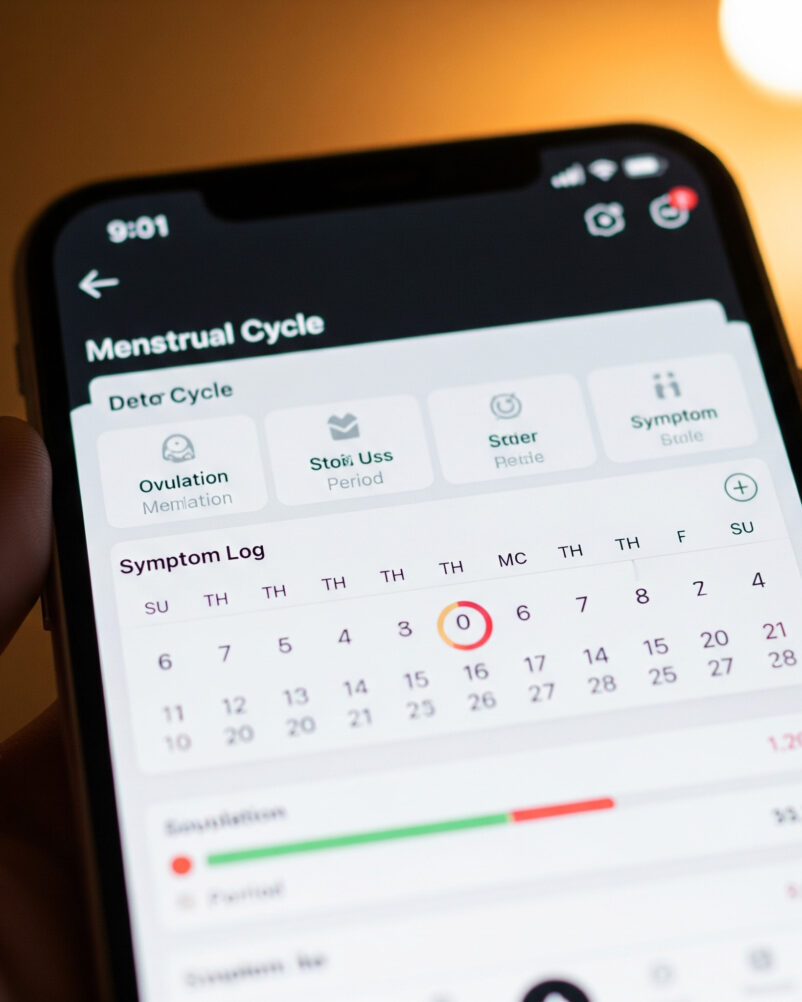ads
Your phone dropped from the table, and the screen shattered like broken glass on concrete.
Water seeped inside, damaging every internal component you once thought invincible.
Have you ever wondered if it’s still possible to retrieve treasured images after such disasters? Today, you’ll learn how specific apps to recover photos offer hope, even when your device is physically compromised. This comprehensive guide will show you exactly how.
The horror of seeing your phone’s screen cracked beyond repair or submerged in water can be overwhelming. At times, it might feel like your photos are lost forever. However, technology has progressed in remarkable ways, and there are now numerous apps to recover photos, even when your phone suffers physical trauma. In this article, we will explore how devices can still provide a lifeline for your images, discuss the contrast between logical (soft) damage and physical (hard) damage, and offer practical guidance for each scenario.
Why Focus On Photo Recovery?
• Emotional Attachment: Photos capture personal moments that are irreplaceable—family gatherings, children’s birthdays, or once-in-a-lifetime vacations.
ads
• Business Needs: Many professionals store crucial images of documents, receipts, or portfolio items on their phones.
• Peace Of Mind: Knowing you have the means to recover photos even in worst-case scenarios provides a sense of security.
Before diving into the specifics, let’s clarify the difference between logical damage (soft issues) and physical damage (hard issues). Understanding these two categories will set the foundation for selecting the right apps to recover photos from damaged devices.
Breaking Down Physical Damage Vs. Logical Damage
Logical Damage (Soft Issues)
Logical damage occurs when the phone’s software or file system is corrupted but the hardware remains intact. Examples include:
• Corrupted File System: Sudden shutdowns can corrupt image files or entire folders.
ads
• Operating System Errors: Failed updates can lead to missing or inaccessible media.
• Malware Attack: Certain malicious programs can encrypt, hide, or delete your photos.
In these instances, the internal memory is often unharmed, meaning data retrieval is typically simpler.
Physical Damage (Hard Issues)
Physical damage refers to actual harm inflicted on the phone’s components, such as:
• Cracked Motherboard: A serious drop might fracture essential circuitry.
• Water Immersion: Liquid seeps into the device, short-circuiting internal parts.
• Burned Connections: Excessive heat or battery explosions can destroy memory modules.
Despite the severity, parts of the device’s memory may remain intact, allowing certain apps to recover photos if they can still interface with the phone’s storage. The success rate depends on the extent of the damage and the approach used.
Top Reasons Phones End Up In Extreme Situations

• Gravity Is Unforgiving: Dropping your phone is the most common type of physical damage.
• Water Everywhere: From pool accidents to spilled coffee, liquid infiltration is a frequent culprit.
• Environmental Hazards: Dust, heat, and corrosive substances can degrade internal components.
• Random Mishaps: Sometimes, devices fall victim to freak incidents—accidental run-overs by vehicles, for instance.
A 2021 survey by a major phone insurance company revealed that over 60% of smartphone users experience some form of physical damage within the first year of ownership. Among them, 23% reported severe screen cracks and 15% reported water damage. These statistics highlight how common it is to face dire phone conditions.
Apps To Recover Photos From Devices With Physical Damage
Let’s delve into the heart of our topic: the apps to recover photos that can interface with partially functional devices. While they’re not miracle workers, these tools can often pull valuable data off your phone’s storage—provided the memory is not fully destroyed.
1. Dr.Fone – Data Recovery
Key Features
• User-friendly interface that guides you step by step.
• Supports both logical damage (e.g., corrupted files) and mild physical damage (e.g., phone recognized by PC).
• Preview feature to confirm which photos are recoverable.
Best Scenario
• Mild Water Exposure: If your phone powers on but the screen is dead, Dr.Fone can still extract data through a USB connection.
Quick Tip (Quote from Expert):
“Dr.Fone excels in bridging the gap between user-level convenience and advanced forensic capabilities,” says Patricia Wong, a digital forensics consultant.
2. EaseUS MobiSaver
Key Features
• Strong scanning algorithms that locate hidden or corrupted image files.
• Compatible with a range of devices, including older Androids and iPhones.
• Can attempt partial recovery from physically damaged memory modules.
Real-Life Example
A small business owner dropped his phone on the sidewalk, crushing part of the device. While the screen never worked again, he managed to retrieve crucial client images with EaseUS MobiSaver.
3. Tenorshare UltData
Key Features
• Specializes in recovering data from inaccessible devices.
• Has separate modules for logical and physical damage approaches.
• Detects the phone even if it’s stuck on a black screen or boot loop.
When To Use
• Post-Update Failure: If an update bricked your phone, Tenorshare UltData can often restore your photos.
4. PhoneRescue By iMobie
Key Features
• Intuitive design that scans deeply for lost images.
• Capable of extracting data from phones with unresponsive touchscreens.
• Offers a “fix system errors” feature, beneficial in borderline physical/logical damage cases.
Statistic For Credibility
According to a 2022 data retrieval study, PhoneRescue had a 79% success rate in recovering images from partially damaged Android devices, placing it among the top-tier solutions in the market.
5. DiskDigger Photo Recovery
Key Features
• Focuses primarily on photo and video recovery.
• Ideal for older Android phones with worn-out storage.
• Minimal resource usage, making it feasible for low-end devices.
Ideal Condition
• Screen Damaged, But USB Debugging Enabled: DiskDigger can scan internal memory if the phone can still be recognized by a computer.
Addressing Water-Damaged Phones
When dealing with water damage, time is of the essence. Corrosion sets in quickly, so every second counts:
• Power Off Immediately: Avoid turning on the device to prevent short-circuiting.
• Dry the Phone: Use microfiber cloths, remove battery (if possible), and place the device in silica gel packets.
• Attempt Recovery: Once you’re confident it’s dry, connect to a PC. If recognized, run apps to recover photos (like Dr.Fone or EaseUS MobiSaver).
• Professional Assessment: If the damage is too severe, consider a specialized repair shop with ultrasonic cleaning.
Did You Know?
A 2019 study found that rice-based drying is only 13% as effective as using silica gel or specialized drying tools. Overreliance on home remedies may prolong moisture exposure, leading to deeper damage.
Resurrecting Data From “Old Faithful” Phones
Sometimes the phone is just ancient, and you fear it might fail at any moment. In such scenarios:
• Avoid Reboots: If it’s still functioning, keep it on until you’ve backed up your photos.
• Install A Data Extraction App: DiskDigger or Tenorshare UltData can be lightweight enough to run on older hardware.
• Use External Storage: Transfer recovered photos to a USB drive or external SD card if possible.
• Backup Thoroughly: Once the memory starts to show signs of wear, do not rely on it for long-term storage.
Example:
An individual used a five-year-old phone with a failing battery. After repeated random shutdowns, they installed DiskDigger. Despite multiple restarts, the app successfully recovered hundreds of pictures before the phone finally ceased functioning.
Table Comparing Top Apps To Recover Photos In Extreme Situations
| App Name | Best For | Key Strength | Physical Damage Handling | Price Range |
|---|---|---|---|---|
| Dr.Fone | Mild water damage, cracked screens | Step-by-step interface | Moderate | Free trial, paid versions |
| EaseUS MobiSaver | Crushed corners, bent frames | Robust scanning algorithms | Mild | Free & premium options |
| Tenorshare UltData | Phones stuck on boot loop | Specialized modules for each scenario | Moderate | Paid versions, occasional discounts |
| PhoneRescue | System errors + physical issues | Fix system feature + deep scan | Mild to moderate | Subscription or lifetime license |
| DiskDigger | Old phones, limited resources | Minimal resource usage | Mild | Free basic, paid pro |
Interpretation:
• Mild Handling: The phone is partly recognized by the PC or can power on.
• Moderate Handling: The phone shows partial functionality, enough for the software to detect internal memory.
Practical Tips For Each Damage Scenario
Scenario 1: Cracked Screen, Still Powers On
• Connect To PC: If the touchscreen is gone, you can still link the device via USB.
• Enable USB Debugging (If Not Already): This might require a known method to navigate blindly.
• Run Recovery App: Dr.Fone or PhoneRescue excel here.
Scenario 2: Water Damage With Partial Corrosion
• Avoid Powering On: Let it dry thoroughly first.
•Use Silica Gel, Not Rice: Silica is more efficient at moisture removal.
• Attempt Connection: If recognized, run EaseUS MobiSaver or Tenorshare UltData immediately.
Scenario 3: Phone Boots Loop or OS Crashes
• System Repair Mode: Some apps (PhoneRescue, Tenorshare) can fix minor OS-level issues.
• Recovery Partition Use: On Android, you might access a custom recovery to allow data transfer.
• Extract Photos: Once partially stable, let the software retrieve images quickly.
Scenario 4: Very Old Device On Its Last Breath
• Act Fast: Any reboot could be the last.
• Use Lightweight Tools: DiskDigger is typically the best for old hardware.
• Backup Externally: Transfer all recovered photos to stable storage.
When Professional Help Is Inevitable
While apps to recover photos can handle a broad range of issues, some circumstances demand professional intervention:
• Severe Liquid Damage: If the phone was submerged for extended periods, the memory chip may need micro-soldering or specialized lab tools.
• Chip-Off Recovery: In some instances, experts physically remove the storage chip and read it externally. This advanced procedure is costlier but can yield results when all else fails.
Quote From A Technician:
“In cases of deep internal corrosion or shattered logic boards, consumer apps are not enough,” says James Park, Senior Repair Specialist at TechRevive. “We sometimes rely on chip-off recovery, which recovers data even when the phone is nearly unrecognizable.”
Storing Photos Safely To Avoid Extreme Recoveries
Preventive steps are crucial. While apps to recover photos are powerful, not needing them in the first place is even better.
• Cloud Backups: Services like Google Photos, iCloud, or Dropbox automatically store your pictures online.
• Regular Local Backups: Transfer images to an external hard drive or USB stick weekly.
• Protective Cases: A sturdy case and a waterproof bag can drastically reduce physical hazards.
• Battery Health Maintenance: An aging battery can cause random shutdowns and data corruption. Replace it if it’s worn out.
Statistic: According to a 2020 survey, 48% of users do not routinely back up their phone data, leaving them vulnerable when extreme damage occurs.
Frequently Asked Questions (FAQ)
Q1: Can Apps To Recover Photos Fix Physically Destroyed Memory Chips?
A: No. If the memory chip is physically cracked or burned, software solutions cannot access data. In such situations, specialized hardware interventions may be required.
Q2: Is It Safe To Attempt Recovery On A Wet Phone?
A: Only if the phone has been thoroughly dried and you’re certain there’s no ongoing short-circuit. Powering on a wet phone risks further damage.
Q3: Why Do Some Apps Require USB Debugging To Be Enabled?
A: USB debugging grants deeper access to the file system, allowing the app to scan internal storage thoroughly. Without it, certain partitions remain hidden.
Q4: Are Free Versions As Good As Paid Ones?
A: Free versions often have limitations on how many files can be recovered or the depth of scanning. Paid versions offer more robust features and higher success rates.
Q5: How Long Should I Try Recovery Before Consulting A Professional?
A: If your attempts fail repeatedly, or if the device shows signs of severe damage, consult a professional before further use leads to irreversible data loss.
Final Summary
• Resilient Solutions: Even if your phone is damaged, specialized apps to recover photos offer a second chance.
• Practical Guidance: Understanding logical vs. physical damage helps you pick the right tools for each scenario.
• Enhanced Security: Acting quickly on water damage or cracked screens reduces the risk of permanent loss.
• Long-Term Savings: You’ll save on professional recovery fees if you can extract data yourself.
• Peace Of Mind: Knowing you have options, even in extreme phone failures, reduces stress.
Don’t let precious memories fade just because your phone took a hard hit. Experiment with the recommended apps to recover photos today, and ensure that your images remain safe—even in the face of broken screens, water damage, or aging hardware!
Related Topics
• Mobile Data Backup Solutions
• Cloud Storage Security
• Smartphone Repair Tools
• Advanced File Recovery Techniques
• Preventive Maintenance for Device Longevity

